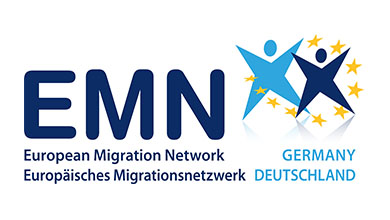Attracting highly qualified and qualified third-country nationals ,
 Source: BAMF
Source: BAMF
Germany's residence law offers skilled workers from third countries broad employment options and is relatively liberal compared to other industrialised nations. Subsidiary measures, such as information platforms, complement the statutory regulations.
The immigration of skilled workers to Germany increased in recent years and in the year 2012 was at around 27,000 third-country nationals. However, a direct causal relationship between this increase and political measures cannot be established.
Highly qualified third-country nationals do not immigrate exclusively to obtain the residence titles intended for them (Sections 19 and 20 German Residence Act as well as, since 1 August 2012, Section 19a German Residence Act – EU Blue Card): A significant portion instead obtain a residence permit for qualified employment under Section 18, Subs. 4 German Residence Act.
In 2012, the Federal Employment Agency issued 25,921 approvals for qualified employment under Section 18, Subs. 4 German Residence Act. Estimates show that of those, between 53 % and 87 % were issued to highly qualified third-country nationals. Then there is the not insignificant portion of highly qualified persons who entered under Section 18, Subs. 4 German Residence Act, without requiring approval from the Federal Employment Agency, and who thus do not appear in the approval statistics of the Federal Employment Agency.
The immigration rules for skilled workers continue to be considered by German companies (especially small- and medium-sized businesses) and even by some qualified persons as somewhat complicated, even though the OECD finds that Germany by now belongs to the countries with the lowest hurdles for the immigration of highly skilled workers. However, the OECD recommends to supplement the current possibilities of immigration that do not require a university degree, for instance, also with a greater consideration of specific human capital
criteria.
Working Paper 53 was produced by the German Contact Point of the European Migration Network (EMN) at the Federal Office for Migration and Refugees as a sub-report to a com-parative European study, and was co-financed by the European Union.
study compiled by: Dr. Matthias Mayer

